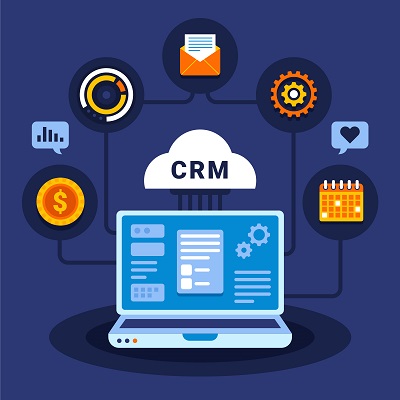


Salesforce adoption is a change journey—leaders must align people, processes, and systems to unlock real CRM value.
The success of Salesforce adoption depends less on how well it’s configured and more on how well it’s accepted. For leaders, the real challenge is managing the behavioral shift that CRM demands, aligning it with strategy, culture, and daily workflows from day one.
Providing logins to Salesforce doesn’t mean your team will use it. Real adoption comes from belief—that Salesforce will actually make work easier, faster, and more valuable. This belief is earned, not assumed.
Too often, CRM adoption is treated as an afterthought. Teams are expected to change how they work overnight, with minimal input or context. When Salesforce feels like a monitoring tool instead of a productivity partner, resistance builds. People revert to spreadsheets, duplicate efforts, or ignore the system altogether.
Leaders must take responsibility for this transition. That means involving teams early in the rollout, explaining the “why” behind the change, and demonstrating how Salesforce supports—not replaces—their roles. It also means being visible champions of the CRM, reinforcing its use in meetings, KPIs, and day-to-day conversations.
Adoption isn’t a checklist. It’s a cultural shift. And unless leaders prioritize user trust and utility from the start, Salesforce will remain underused, no matter how well it’s implemented.
The fastest way to lose momentum after a CRM launch is to force teams into workflows that don’t reflect reality. Salespeople, service reps, marketers—they all work differently. If Salesforce adds steps, creates extra clicks, or feels disconnected from how work actually happens, users won’t engage.
CRM success depends on process alignment. That means configuring Salesforce to match how teams work—not expecting teams to conform to a default structure. For example, if a deal review happens weekly, the opportunity data should support that rhythm. If service teams resolve tickets in stages, the case management system must reflect that nuance.
Many CRM failures stem from assumptions. The system gets designed without observing how people actually engage with customers, log activity, or escalate issues. The result? A mismatch that frustrates users and delays adoption.
Leaders should invest in understanding these day-to-day realities. Shadow teams. Review common scenarios. Build feedback loops. When Salesforce becomes an extension of how work already flows, it earns loyalty. It becomes a trusted system, not a burden.
Initial Salesforce training is necessary—but it’s rarely sufficient. A one-time onboarding session won’t equip your team to navigate evolving processes, feature updates, or use-case complexity. And expecting full adoption after a few tutorials sets your teams up for struggle.
Real enablement is continuous. It means providing contextual help when users need it, creating role-specific learning paths, and sharing use cases that resonate with real goals. For sales teams, that might be how to reduce pipeline leakage. For support teams, how to escalate smarter. For marketing, how to personalize campaigns using segmentation.
Enablement also means reinforcement. Managers should use CRM dashboards in team meetings. Leaders should ask for insights from Salesforce in strategic reviews. Recognition and rewards should reflect effective system use—not just outcomes.
The strongest Salesforce adoption happens where enablement is woven into the culture—not treated as an onboarding event. When users see the system improving how they work, not complicating it, they invest in using it fully. That’s when CRM transforms from a tool to a growth driver.
When leaders use Salesforce insights in decisions, teams follow. CRM adoption isn’t about micromanaging—it’s about modeling value. If Salesforce is treated as flexible and open to improvement, users engage. But if it feels rigid, they tune out. Real change happens when leadership makes CRM part of the business, not just part of the tech stack.
Salesforce adoption isn’t a checkbox—it’s a change journey that must be led from the top. Aligning systems, processes, and people takes intention and support. That’s why many leaders turn to Salesforce managed services to ensure their CRM stays aligned with strategy, enables real usage, and drives lasting value across the organization.
